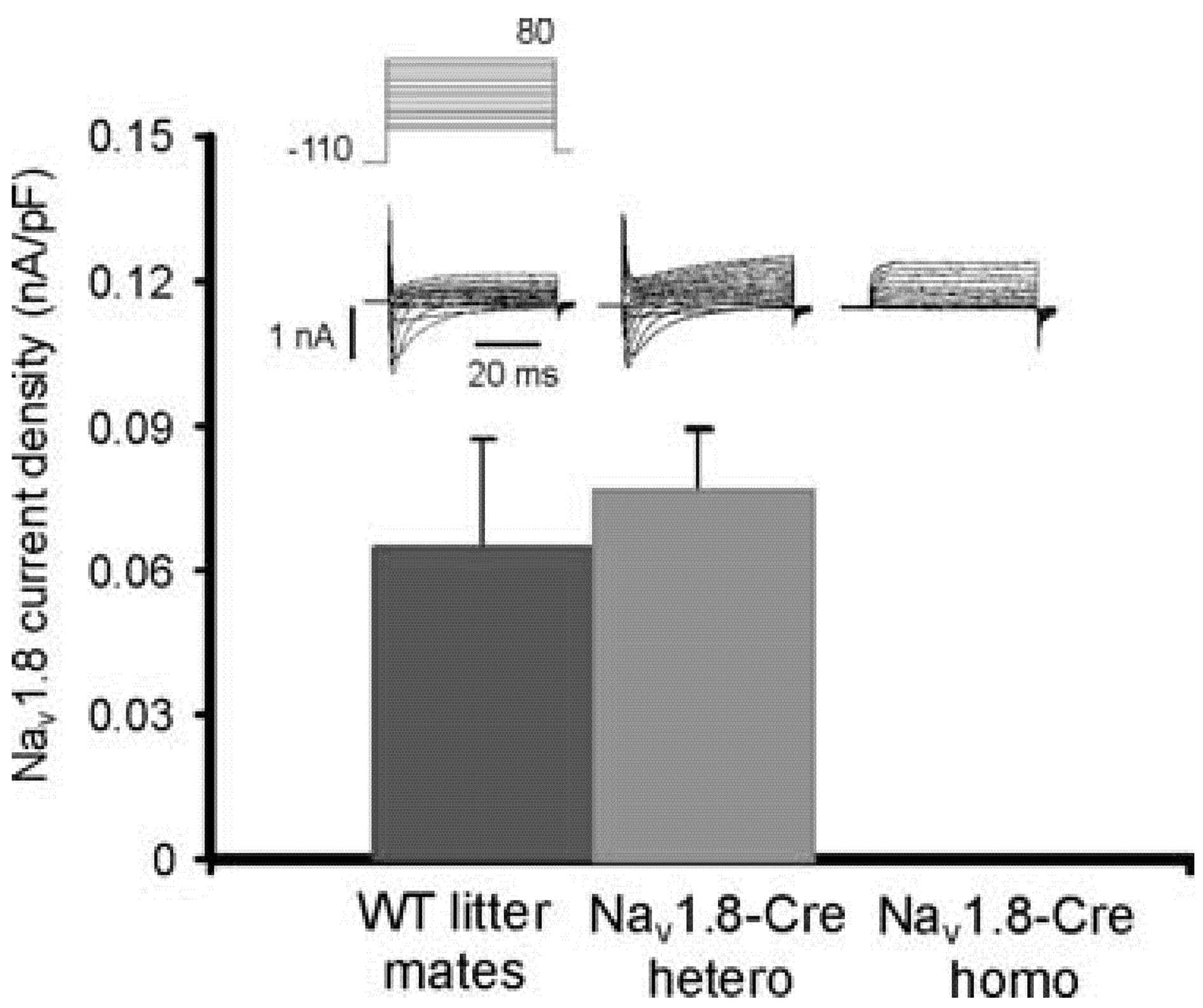Mouse null mutants provide useful insights into gene function, but perinatal lethality or developmental compensatory mechanisms may obscure behavioural phenotypes. It is desirable to be able to delete genes in specific tissues, preferably in an inducible manner. The Cre-loxP system allows tissue-specific Cre-recombinase mice to be crossed with mice containing floxed (loxP-flanked) genes to produce tissue-specific null mutants. NaV1.8 is a voltage-gated sodium channel expressed only in a subset of sensory neurons. More than 85 % of these are nociceptors (e.g. Djouhri et al. 2003). We therefore inserted (knocked-in) the bacteriophage Cre-recombinase gene at the NaV1.8 locus in embryonic stem cells and generated transgenic mice expressing Cre recombinase under the control of the NaV1.8 promoter.
Analysis of the expression pattern of functional Cre recombinase using ROSA26 reporter mice demonstrated that Cre was expressed in an identical pattern to that of NaV1.8. Expression began at embryonic day 14 in small diameter neurons in dorsal root, trigeminal and nodose ganglia, but was absent in non-neuronal or CNS tissues. This pattern of expression was unaltered in adult animals. Studies of NaV1.8 heterozygous null mice have shown that these animals have normal electrophysiological and behavioural phenotypes (Akopian et al. 1999). NaV1.8-Cre and wild-type (WT) mice were killed humanely and dorsal root ganglion cultures prepared. Tetrodotoxin-resistant (TTX-r) Na+ channel expression in NaV1.8 heterozygous Cre mice was indistinguishable from that in WT (Fig. 1). Similarly, thresholds of pain behaviour in response to thermal and mechanical stimuli in NaV1.8-Cre heterozygotes and both phases of formalin-induced pain behaviour were identical in NaV1.8-Cre heterozygotes and normal mice.
These findings demonstrate the NaV1.8-Cre mouse line is a suitable tool to analyse the effects of gene deletion on pain behaviour. Specific gene deletion in nociceptors should provide insights into the role of broadly-expressed genes in nociception and pain pathways.
The first two authors contributed equally to this work.
This work was supported by the MRC

